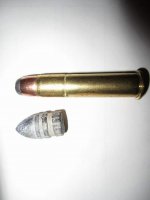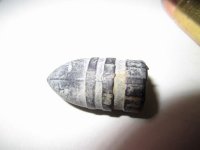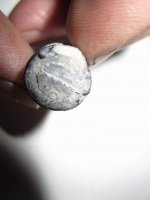undertaker
Hero Member
- May 26, 2006
- 562
- 337
- Detector(s) used
- Garrett Ace 250 and Whites Bullseye II Pinpointer
I found this large rifle lead on the shoreline of a lake while looking for arrowheads. Can anyone tell me if this lead is old and what gun would have shot this. It appears to be at least a 58.cal maybe a bit larger. In the pic it is next to a 45-70 load for size comparison.











